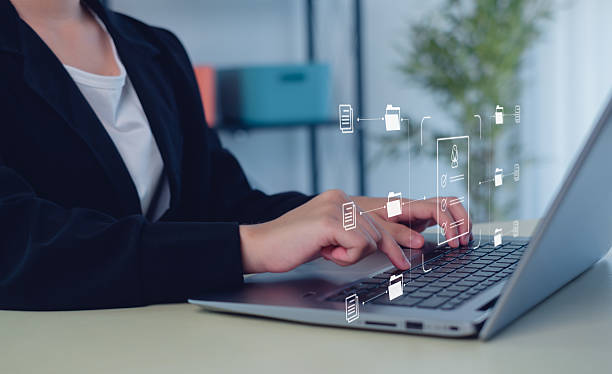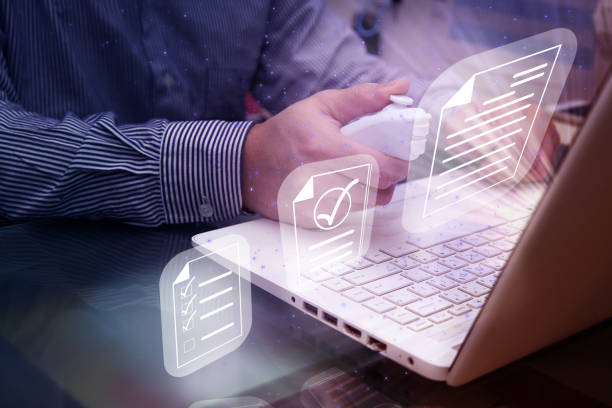What is an Artificial Intelligence Robot and How Does it Work?
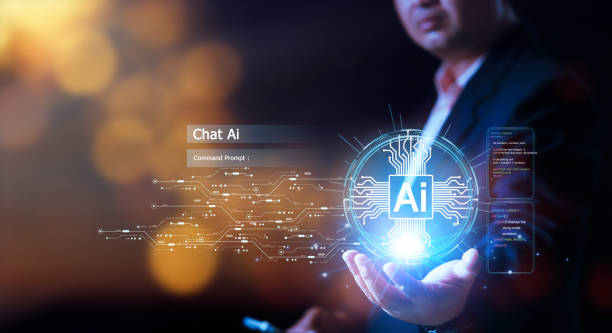
An Artificial Intelligence Robot is a combination of two separate fields: #Robotics and #Artificial_Intelligence.
Robotics deals with the design, construction, operation, and application of robots, while Artificial Intelligence deals with the development of computer systems that can perform tasks that typically require human intelligence, such as learning, problem-solving, and decision-making.
The integration of these two fields leads to the creation of robots that can not only perform physical tasks but can also think and learn independently.
An Artificial Intelligence Robot works by first collecting data from its surrounding environment through various sensors.
These sensors can include cameras, microphones, touch sensors, and other tools that gather information about the environment.
This data is then sent to a central processing system, which is usually a powerful computer.
In this system, artificial intelligence algorithms analyze the data and make decisions based on it.
These algorithms can include neural networks, machine learning algorithms, and other artificial intelligence methods.
After a decision is made, the Artificial Intelligence Robot acts through its actuators, such as motors, pistons, and other mechanical components.
These actuators allow the robot to move in its surrounding environment, manipulate objects, and perform various tasks.
In short, an Artificial Intelligence Robot is a complex system that uses sensors, processors, and actuators to interact with the world around it and can perform tasks that were previously only possible for humans.
Artificial Intelligence has applications in various fields of science and technology.
For more information, you can refer to this Artificial Intelligence link on Wikipedia.
Are you tired of missing business opportunities due to not having a professional company website?
Rasaweb helps you with professional company website design:
✅ Build a powerful and reliable image of your brand
✅ Turn website visitors into loyal customers
⚡ Get a free consultation right now!
Amazing Applications of Artificial Intelligence Robots in Various Industries
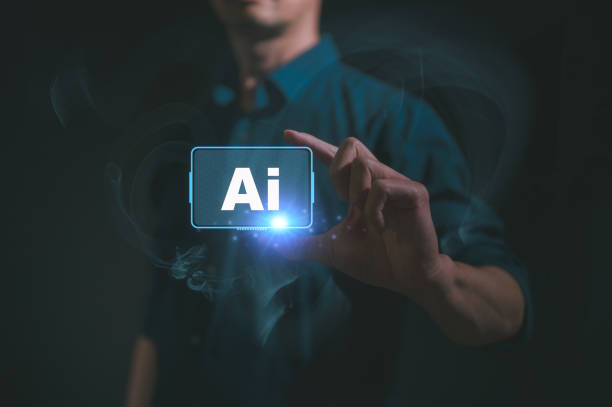
Artificial Intelligence Robots have extensive applications in various industries and are increasingly changing the way things are done.
In the manufacturing industry, Artificial Intelligence Robots can be used for automating production lines, quality inspection, and material handling.
These robots can work with greater accuracy and speed than humans, resulting in increased productivity and reduced costs.
In the healthcare industry, Artificial Intelligence Robots can be used to assist surgeons in performing complex operations, provide remote care to patients, and analyze medical data.
These robots can operate with high precision and accuracy, resulting in improved treatment outcomes and reduced medical errors.
In the service industry, Artificial Intelligence Robots can be used to provide customer service, answer questions, and perform administrative tasks.
These robots can be available 24 hours a day, 7 days a week, resulting in improved customer satisfaction and reduced operating costs.
Finally, in the education industry, Artificial Intelligence Robots can be used to provide personalized training, assess student performance, and assist teachers in performing educational tasks.
Artificial Intelligence Robots can design appropriate training programs according to the individual needs of each student, resulting in improved learning and increased student motivation.
Advantages and Disadvantages of Using Artificial Intelligence Robots
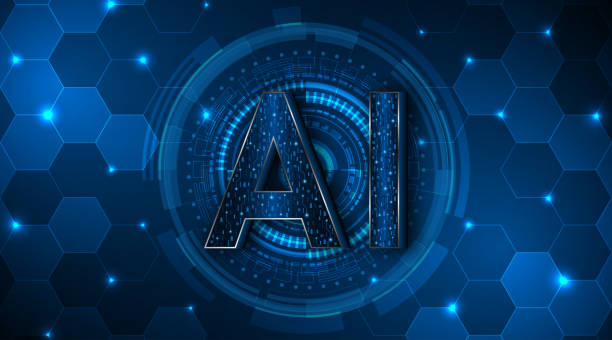
Using Artificial Intelligence Robots has several advantages and disadvantages that should be carefully considered.
Advantages include increased productivity, reduced costs, improved accuracy and speed of work, 24/7 service provision, and the ability to perform dangerous and repetitive tasks.
Artificial Intelligence Robots can work in dangerous and unfavorable environments and prevent harm to humans.
Also, these robots can perform repetitive and tedious tasks continuously and without fatigue.
However, the use of Artificial Intelligence Robots also has disadvantages.
Disadvantages include high implementation and maintenance costs, the need for technical expertise for setup and maintenance, ethical and social concerns related to the replacement of the human workforce, and the possibility of errors and malfunctions in the robot’s performance.
Also, Artificial Intelligence Robots may not be able to function properly in unexpected and complex situations and may require human intervention.
Therefore, before using Artificial Intelligence Robots, its advantages and disadvantages should be carefully evaluated and an informed decision should be made.
The use of Artificial Intelligence Robots should be such that it helps improve human lives and prevents potential problems.
| Advantages | Description |
|---|---|
| Increased productivity | Robots can work continuously and without fatigue. |
| Reduced costs | Automation can reduce labor costs. |
| Improved accuracy | Robots can perform tasks with greater accuracy. |
| Performing dangerous tasks | Robots can work in dangerous environments. |
Will Artificial Intelligence Robots Replace the Human Workforce?
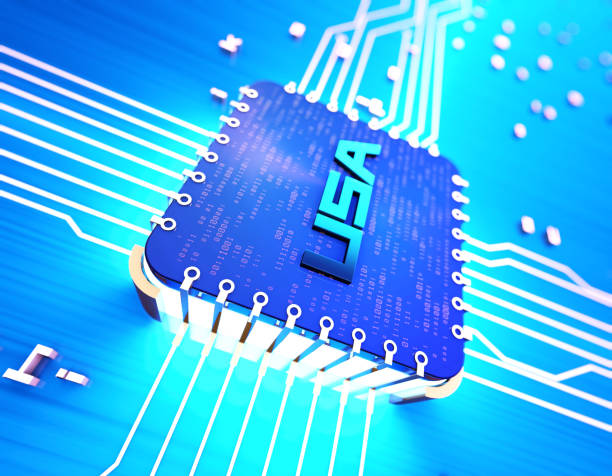
The question of whether Artificial Intelligence Robots will replace the human workforce is one of the most controversial questions of our time.
A definitive answer to this question is difficult, as this issue depends on various factors.
These factors include the speed of technological progress, government policies, and the level of society’s readiness to accept changes.
Some experts believe that Artificial Intelligence Robots will eventually eliminate many jobs, especially those involving repetitive and routine tasks.
These experts warn that this could lead to increased unemployment and social inequality.
However, some other experts believe that Artificial Intelligence Robots will not only not eliminate jobs, but will also create new jobs.
These experts believe that Artificial Intelligence Robots can help humans perform more complex and creative tasks, resulting in increased productivity and economic growth.
In any case, it is clear that Artificial Intelligence Robots are changing the way things are done, and these changes can have far-reaching consequences for the workforce.
Therefore, it is necessary for governments, employers, and employees to prepare for these changes and develop policies and programs that help reduce the negative effects and increase the positive effects of these changes.
Did you know that a weak company website takes away many opportunities from you every day? Solve this problem forever by designing a professional company website by Rasaweb!
✅ Creating a powerful and reliable image of your brand
✅ Targeted attraction of new customers and increased sales
⚡ [Get free website design consultation]
Ethical and Legal Challenges of Using Artificial Intelligence Robots
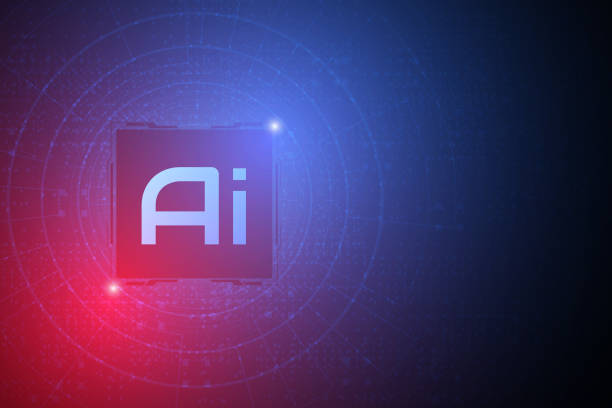
The use of Artificial Intelligence Robots brings with it several ethical and legal challenges that must be carefully considered.
One of these challenges is the issue of accountability.
If an Artificial Intelligence Robot causes damage, who will be responsible? Is the robot’s manufacturer, the robot’s owner, or the robot itself responsible? These questions do not yet have definitive answers and require careful legal and ethical consideration.
Another challenge is the issue of privacy.
Artificial Intelligence Robots can collect a lot of information about individuals, such as personal information, behavioral habits, and location.
How can this information be protected and prevented from being misused? Privacy laws and regulations should be such that they protect individuals’ rights against the unauthorized collection and use of information by Artificial Intelligence Robots.
In addition, the issue of discrimination is also an important ethical challenge.
Artificial Intelligence Robots can make decisions based on the data they are trained on, which can be discriminatory.
For example, an Artificial Intelligence Robot may unconsciously discriminate against people based on their gender, race, or religion.
To prevent this problem, the training data of Artificial Intelligence Robots must be carefully examined and ensured to be fair and unbiased.
The Future of Artificial Intelligence Robots: Predictions and Possibilities
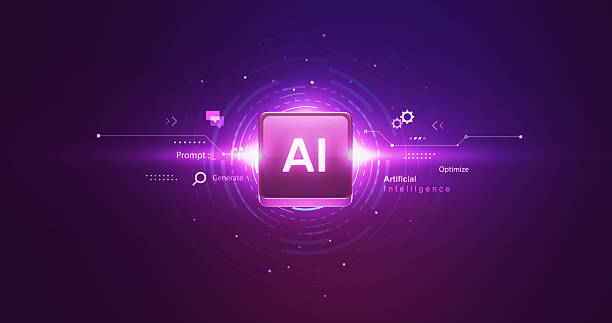
The future of Artificial Intelligence Robots looks very bright and promising.
With the ever-increasing advancement of technology, Artificial Intelligence Robots will become increasingly smarter, more capable, and more autonomous.
It is predicted that in the near future, Artificial Intelligence Robots will be present in all aspects of our lives and will help us in performing daily tasks, solving complex problems, and discovering new opportunities.
One of the important predictions about the future of Artificial Intelligence Robots is the development of social robots.
These robots will be able to interact with humans, understand their emotions, and respond to their needs.
Social robots can be used in various fields such as education, healthcare, and customer service.
Another prediction is the development of autonomous robots that will be able to perform their tasks without the need for human intervention.
These robots can be used in various fields such as transportation, agriculture, and manufacturing.
The development of autonomous robots can lead to increased productivity, reduced costs, and improved safety.
However, the development of Artificial Intelligence Robots also brings new challenges that must be carefully considered.
These challenges include the issue of security, privacy, and accountability.
How do Artificial Intelligence Robots Contribute to Sustainable Development?
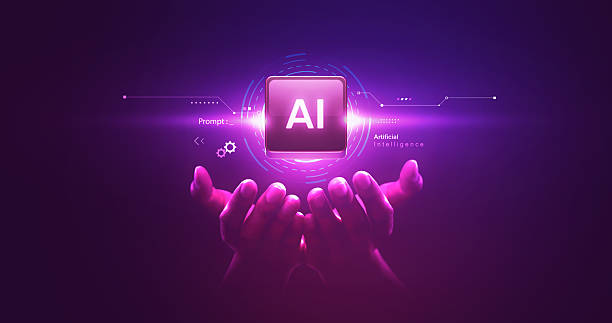
Artificial Intelligence Robots can play an important role in sustainable development.
By using Artificial Intelligence Robots, it is possible to help improve energy efficiency, reduce environmental pollution, and better manage natural resources.
For example, Artificial Intelligence Robots can be used to optimize energy consumption in buildings, factories, and transportation networks.
These robots can analyze data related to energy consumption, identify consumption patterns, and suggest ways to reduce energy consumption.
In addition, Artificial Intelligence Robots can also be used to reduce environmental pollution.
For example, Artificial Intelligence Robots can be used to monitor air and water quality, identify sources of pollution, and suggest ways to reduce pollution.
These robots can provide valuable information to policymakers and managers by collecting and analyzing data related to the environment.
Finally, Artificial Intelligence Robots can also be used to better manage natural resources.
For example, Artificial Intelligence Robots can be used to predict and manage droughts, manage forests and rangelands, and optimize water consumption.
These robots can provide valuable information to farmers and natural resource managers by using data related to weather, soil, and vegetation.
| Area | Application of Artificial Intelligence Robots |
|---|---|
| Energy | Optimizing energy consumption |
| Environment | Reducing pollution |
| Natural Resources | Better management of resources |
Artificial Intelligence Robots and the Transformation in Daily Life
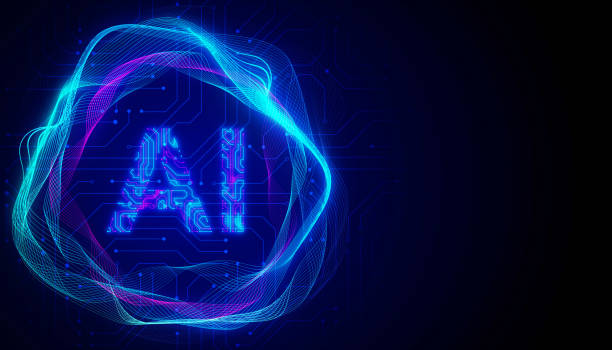
Artificial Intelligence Robots are creating fundamental transformations in our daily lives.
These robots are currently present in many aspects of our lives, including homes, workplaces, and transportation.
For example, Artificial Intelligence Robots in homes can be used for cleaning, cooking, and caring for children and the elderly.
In the workplace, Artificial Intelligence Robots can be used to perform repetitive and routine tasks, analyze data, and provide customer service.
In transportation, Artificial Intelligence Robots can be used for autonomous driving, traffic management, and providing information services.
With the ever-increasing advancement of technology, it is predicted that Artificial Intelligence Robots will play a much more important role in our lives in the near future.
These robots can help us in performing daily tasks, solving complex problems, and discovering new opportunities.
However, these transformations also bring new challenges that must be carefully considered.
These challenges include the issue of privacy, security, and accountability.
Therefore, it is necessary for governments, employers, and members of society to prepare for these transformations and develop policies and programs that help reduce the negative effects and increase the positive effects of these transformations.
Did you know that a poorly designed online store can drive away up to 70% of your potential customers? Rasaweb transforms your sales with professional and user-friendly online store designs.
✅ Significant increase in sales and revenue
✅ Complete optimization for search engines and mobile
⚡ [Get a free consultation from Rasaweb]
Case Study of Artificial Intelligence Robots in Medicine
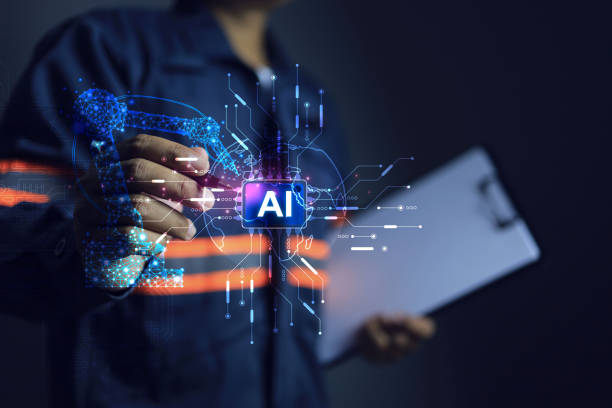
One of the areas where Artificial Intelligence Robots have great potential is the medical field.
Artificial Intelligence Robots can be used in various fields such as disease diagnosis, disease treatment, surgery, patient care, and hospital management.
For example, Artificial Intelligence Robots can be used to diagnose diseases by analyzing medical images such as radiology, MRI, and CT scans.
These robots can identify disease patterns and provide a more accurate diagnosis with greater accuracy and speed than doctors.
In addition, Artificial Intelligence Robots can also be used to treat diseases.
For example, Artificial Intelligence Robots can be used to provide personalized treatments, monitor patients’ conditions, and provide psychological support.
These robots can design appropriate treatment plans and help patients improve their condition by collecting and analyzing data related to patients.
Finally, Artificial Intelligence Robots can also be used for surgery.
Surgical robots can perform complex operations with greater precision and skill than human surgeons and reduce the risk of side effects.
In general, Artificial Intelligence Robots can play a very important role in improving the quality of medical services and increasing the health of society.
What Will Your Future with Artificial Intelligence Robots Look Like?
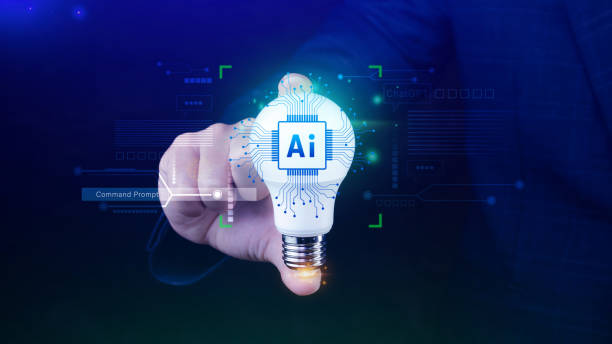
Imagining a future in which Artificial Intelligence Robots play a prominent role can be both exciting and daunting.
It is likely that in the near future, many of our daily tasks will be performed by Artificial Intelligence Robots.
From online shopping and selling to driving and even caring for the elderly, Artificial Intelligence Robots can be present in all aspects of our lives.
These transformations can lead to increased productivity, reduced costs, and improved quality of life.
However, these transformations also bring new challenges that must be carefully considered.
These challenges include the issue of unemployment, social inequality, and ethical concerns related to the use of Artificial Intelligence Robots.
Therefore, it is necessary for us as members of society to prepare for these transformations and play our role in shaping the future of Artificial Intelligence Robots.
We need to become aware of the advantages and disadvantages of Artificial Intelligence Robots, participate in discussions related to Artificial Intelligence Robot policymaking, and acquire the skills necessary to work with Artificial Intelligence Robots.
By doing these things, we can ensure that Artificial Intelligence Robots help improve the lives of all members of society.
Frequently Asked Questions
| Row | Question | Answer |
|---|---|---|
| 1 | What is an Artificial Intelligence Robot? | An Artificial Intelligence Robot is a machine capable of understanding, reasoning, learning, and problem-solving, and can perform complex tasks with relative autonomy. |
| 2 | What are the most important applications of Artificial Intelligence Robots? | Main applications include industrial manufacturing, customer service (chatbots), medicine and surgery, self-driving transport, space exploration, and military affairs. |
| 3 | What is the main difference between an Artificial Intelligence Robot and a regular robot? | A regular robot only follows programmed instructions, while an Artificial Intelligence Robot can learn from data, make decisions, and adapt to new environments. |
| 4 | How do Artificial Intelligence Robots learn? | They improve their performance by identifying patterns through machine learning algorithms (such as deep learning, reinforcement learning) and processing vast amounts of data. |
| 5 | Can Artificial Intelligence Robots have emotions? | Currently, Artificial Intelligence Robots do not have real emotions in the human sense. They can mimic or recognize emotions, but they do not understand and experience them. |
| 6 | What are the current limitations of Artificial Intelligence Robots? | Limitations include the need for large amounts of data, inability to understand abstract concepts, lack of true creativity, ethical issues, and challenges of generalizability in new environments. |
| 7 | What is the role of Artificial Intelligence in the development of Humanoid Robots? | Artificial Intelligence helps humanoid robots to walk, maintain their balance, understand their surroundings, interact with humans, and perform complex tasks. |
| 8 | How is the future of Artificial Intelligence Robots predicted? | It is predicted that Artificial Intelligence Robots will become smarter, more autonomous, and capable of performing more complex tasks in daily life and industry, and their interaction with humans will increase. |
| 9 | Can Artificial Intelligence Robots replace all human jobs? | It is unlikely that all human jobs will be replaced. Robots take over many repetitive and dangerous tasks, but jobs that require creativity, empathy, and moral judgment will remain. |
| 10 | What ethical and social challenges arise with the expansion of Artificial Intelligence Robots? | Challenges include issues related to privacy, data security, ethical decision-making by robots, impact on employment, and accountability in case of errors. |
And other services of Rasa Web Advertising Agency in the field of advertising
Intelligent Conversion Rate Optimization: An effective tool for digital branding with the help of dedicated programming.
Intelligent Link Building: A professional solution for digital branding with a focus on precise audience targeting.
Intelligent Reportage: A novel service for increasing customer attraction through dedicated programming.
Intelligent Reportage: A creative platform for improving customer attraction with marketing automation.
Intelligent Google Ads: A combination of creativity and technology to increase sales by optimizing key pages.
And more than hundreds of other services in the field of internet advertising, advertising consulting and organizational solutions
Internet Advertising | Advertising Strategy | Advertising Reportage
Sources
The Future of Jobs: How AI and Automation are Changing the World of Work
,2024 Artificial Intelligence Report
,How Artificial Intelligence Changes Our Lives
,What Can AI Do For Me? | Narratives and Futures of Intelligence
? With Rasaweb Afarin, your business shines in the digital world! With our expertise in key areas of digital marketing including multilingual website design, search engine optimization (SEO), and professional social media management, we are ready to take your brand to the top.
📍 Tehran, Mirdamad Street, next to the Central Bank, Kazerun Jonoubi Alley, Ramin Alley No. 6


